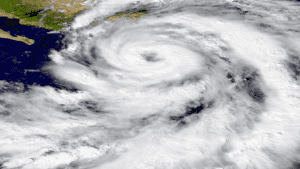As black mold grows, it feeds on materials like wood, fabrics, ceiling tiles, upholstery, and carpet, causing them to rot and fall apart. Left unchecked for a long duration of time, mold can even cause enough damage to collapse ceilings and cave in floorboards. Mold spores are very small and lightweight and can move through the air, and if a damp surface is present the spores will break down and start to grow wherever they land. Not only does black mold have a rapid growth rate, in most cases it is also very harmful to those living around it and can cause major health side effects.

What is black mold?
It is known as a fungus Stachybotrys chartarum. It is often a black color (but it can also be greenish or gray) and can be found just about anywhere, inside, or outside. It can be very dangerous for mold to grow indoors because of how quickly it can spread.

Identifying Black Mold
Mold growing in a visible area is easy to spot. However, there are times that you may not be able to see the mold growing within your building when it is, behind your walls, or insulation. It thrives in dark, damp places, and can grow in a wide range of temperatures from 70 degrees Fahrenheit to 20 degrees Celsius. An indicator of black mold is the damp or musty odor.

Is exposure to mold growth harmful?
Like any mold, it can cause respiratory issues. Those with respiratory concerns, infants, children, and the elderly are considered most at risk of exposure. Some may get symptoms of fatigue, headaches, eye irritation, chronic coughing and sneezing, and a sore throat. While those are some of the mild symptoms, black mold is not risk-free it can cause adverse reactions like pneumonia in young children and the elderly. For those that are immune-compromised, it can also create allergies and asthma.
What are the causes of indoor mold growth?
Mold needs three basic conditions to start to germinate: water, stagnant air, and organic material. Mold can start to germinate as soon as 24 to 72 hours. Make sure to keep an eye throughout your building for any leaks in pipes or roofs, along with poor ventilation on ceilings and walls, and flooding that wasn’t properly taken care of. All these issues can potentially lead to mold.
Learn more about Restoration





